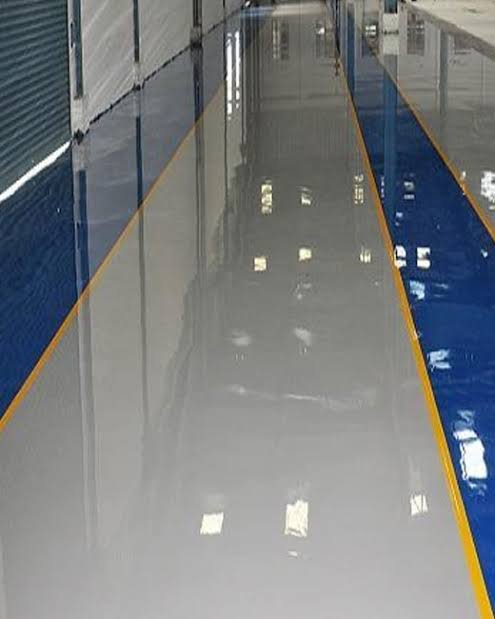EPOXY
FLOORING ON STEEL FLOOR
INTRODUCTION
Epoxy flooring on a steel floor involves
highlighting the benefits of this durable and versatile flooring solution while
emphasizing the specific considerations and steps required for successful
installation. In the realm of industrial flooring solutions,
the pairing of epoxy with steel stands as a pinnacle of durability and
performance. Epoxy flooring, renowned for its seamless finish and robust
properties, finds an ideal canvas in steel substrates, resulting in a flooring
system that excels in even the most demanding environments.
INSTALLATION OF EPOXY
FLOORING ON STEEL FLOOR
Installing epoxy flooring on a steel floor can
be a great way to enhance durability, aesthetics, and cleanliness. Here’s a
general guide to the installation process:
v
Surface
Preparation:
Clean the steel surface thoroughly to remove
any dust, dirt, grease, or other contaminants. Use a degreaser and detergent
solution followed by rinsing with clean water.
Remove any loose paint, rust, or other imperfections
from the steel surface. You may need to sandblast or mechanically grind the
surface to achieve a clean and rough texture, which helps with adhesion.
v
Priming
(Optional but Recommended):
Apply an epoxy primer designed for steel
surfaces. This will enhance adhesion and provide a uniform surface for the
epoxy coating.
Follow the manufacturer’s instructions for
mixing and application. Typically, primers are applied with a roller or brush.
v
Mixing
Epoxy Resin:
Prepare the epoxy resin according to the
manufacturer’s instructions. This usually involves mixing resin with a hardener
in specific proportions.
Ensure thorough mixing to activate the chemical
reaction that will cure the epoxy.
v
Application:
Pour the mixed epoxy resin onto the steel
surface in manageable sections.
Use a roller or squeegee to spread the epoxy
evenly over the surface. Work quickly to ensure an even coat before the epoxy
begins to cure.
Pay attention to edges and corners to ensure
full coverage.
v
Optional
Decorative Flakes or Aggregate (if desired):
If you want to add decorative flakes or
aggregate to the epoxy flooring, sprinkle them onto the wet epoxy surface while
it is still tacky.
Use a clean roller to gently press the flakes
or aggregate into the epoxy to ensure good adhesion.
v
Curing:
Allow the epoxy flooring to cure according to
the manufacturer’s instructions. This typically involves a curing period of
several hours to several days, depending on the specific product and
environmental conditions.
Keep the area free from foot traffic and other
disturbances during the curing process to ensure a smooth finish.
v
Topcoat
(Optional):
For added protection and durability, consider
applying a clear epoxy topcoat over the cured epoxy flooring. This will help to
resist abrasion, chemicals, and UV damage.
Follow the manufacturer’s instructions for
mixing and application of the topcoat.
v
Maintenance:
Once the epoxy flooring is fully cured,
maintain it by regularly cleaning with a mild detergent and water. Avoid using
harsh chemicals or abrasive cleaners, as these can damage the epoxy finish.
CONCLUSION
Epoxy
flooring on steel offers a winning combination of durability, resilience, and
aesthetic appeal, making it an ideal choice for industrial and commercial
spaces seeking reliable, long-lasting flooring solutions. By understanding the
key considerations and following best practices for installation and
maintenance, businesses can enjoy the benefits of epoxy flooring on steel for
years to come.






